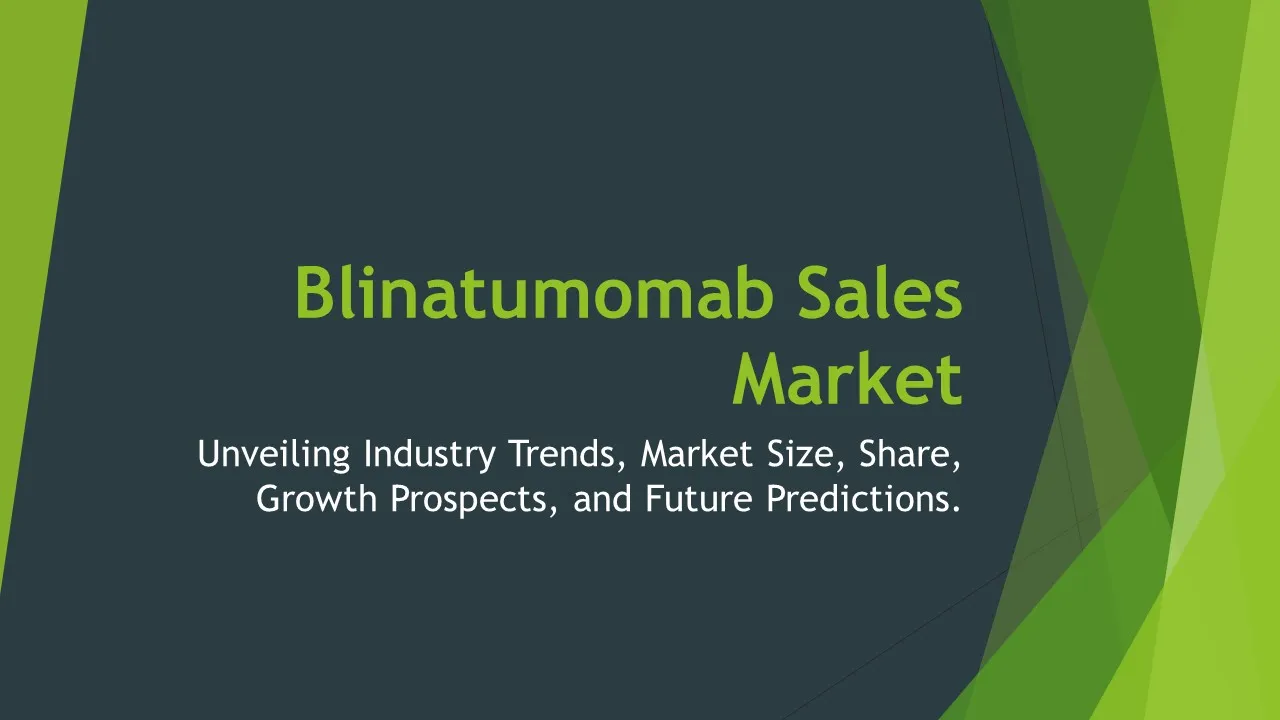Atropine Sales
Atropine Sales Market Segments - by Product Type (Injectable Atropine, Oral Atropine, Ophthalmic Atropine, Topical Atropine, and Others), Application (Ophthalmology, Anesthesia, Cardiology, Pain Management, and Others), Distribution Channel (Hospitals, Retail Pharmacies, Online Pharmacies, Specialty Clinics, and Others), Ingredient Type (Synthetic Atropine, Natural Atropine), and Region (North America, Europe, Asia Pacific, Latin America, Middle East & Africa) - Global Industry Analysis, Growth, Share, Size, Trends, and Forecast 2025-2035
- Report Preview
- Table Of Content
- Segments
- Methodology
Atropine Sales Market Outlook
The global Atropine Sales Market is projected to reach approximately USD 1.5 billion by the year 2035, with a compound annual growth rate (CAGR) of around 6.2% during the forecast period from 2025 to 2035. This growth can be attributed to the increasing prevalence of various ophthalmic and cardiac conditions, the rising number of surgical procedures requiring anesthesia, and the growing awareness of atropine's efficacy in treating bradycardia and other medical conditions. Moreover, advancements in pharmaceutical technology and increased investment in healthcare infrastructure are further catalyzing market dynamics. The rise of telemedicine and online pharmacies is also contributing to accessibility, allowing for the efficient distribution of atropine products across diverse consumer demographics.
Growth Factor of the Market
The Atropine Sales Market is experiencing growth driven by several key factors. Firstly, the increasing incidence of chronic diseases such as cardiovascular disorders, which often require atropine for management, is boosting demand. Secondly, the expansion of the geriatric population, who are more prone to conditions like glaucoma and bradycardia, is significantly increasing the patient base for atropine treatments. Moreover, with the advancements in drug formulation and delivery methods, healthcare providers are now able to offer more effective therapies, enhancing patient outcomes and satisfaction. The rising focus on emergency medical services has also led to the increased utilization of atropine in emergency protocols. Additionally, government initiatives aimed at improving healthcare access and affordability are further propelling market growth.
Key Highlights of the Market
- The market is projected to grow at a CAGR of 6.2% from 2025 to 2035.
- North America holds the largest share of the market, driven by advanced healthcare infrastructure.
- Injectable atropine is the most demanded product type due to its immediate therapeutic effects.
- Ophthalmology is the leading application segment, fueled by rising eye disorders.
- Online pharmacies are increasingly becoming popular distribution channels, enhancing convenience for consumers.
By Product Type
Injectable Atropine:
Injectable atropine is a predominant segment in the Atropine Sales Market, primarily due to its crucial role in emergency medicine and anesthesia. It is often administered to manage bradycardia and as a pre-anesthetic medication to reduce salivation and respiratory secretions. The speed and efficiency of the injectable form provide immediate therapeutic benefits, making it a preferred choice in critical care settings. The increasing number of surgical procedures and emergency interventions is driving the demand for injectable atropine, leading to a sustained market growth in this segment. The drug’s versatility in various medical scenarios enhances its overall market presence and demand.
Oral Atropine:
Oral atropine formulations are gaining traction, particularly for treating gastrointestinal disorders and as a part of combination therapies. The convenience of oral administration appeals to patients who prefer non-injection routes, promoting adherence to treatment regimens. Oral atropine is often utilized in managing conditions like peptic ulcers and specific forms of muscarinic poisoning. Its growing acceptance among healthcare professionals, coupled with the rise in outpatient treatment strategies, is propelling the segment's growth. This form is also gaining favor due to ongoing research exploring its potential benefits in diverse therapeutic applications, further enhancing its market viability.
Ophthalmic Atropine:
Ophthalmic atropine is a critical product type within the market, extensively used in the field of ophthalmology for a variety of applications, including the treatment of uveitis and as a cycloplegic agent during eye exams. It aids in dilating the pupil and paralyzing the ciliary muscle, providing essential diagnostic and therapeutic benefits. The increasing prevalence of eye disorders and the growing number of eye surgeries are propelling demand for ophthalmic atropine formulations. Its efficacy in managing eye-related conditions and enhancing patient comfort in diagnostic procedures positions this segment as a pivotal contributor to overall market growth.
Topical Atropine:
Topical atropine products are emerging in the market, aimed at providing localized relief for various dermatological conditions. This formulation offers an alternative to systemic therapies, minimizing potential side effects associated with oral or injectable forms. It is increasingly being explored for its utility in treating excessive sweating (hyperhidrosis) and other skin-related ailments. As more healthcare professionals recognize the benefits of topical formulations, this segment is anticipated to witness notable growth. The increasing availability of topical atropine in pharmacies and healthcare settings supports its rising adoption among patients seeking localized treatment options.
Others:
This category encompasses various formulations and applications of atropine not specifically mentioned in other segments. Examples include atropine used in veterinary medicine or specialized formulations for research purposes. The diverse applications demonstrate the versatility of atropine, thereby sustaining its relevance in medical practice and research. As the understanding of atropine’s pharmacological properties expands, new uses may be discovered, leading to potential growth in this segment. Moreover, ongoing research into sustainable sourcing and innovative delivery methods is likely to create opportunities for emerging atropine products and formulations.
By Application
Ophthalmology:
The ophthalmology segment is one of the most significant applications for atropine, primarily due to its effectiveness in treating a range of eye conditions, including amblyopia and uveitis. It is widely used in clinical settings for pupil dilation during examinations and surgeries. The rising incidence of eye disorders globally is a major driver for the growth in this segment. As more individuals seek treatment for vision-related problems, the demand for atropine in ophthalmological applications is expected to rise. Additionally, advancements in diagnostic techniques and surgical procedures further enhance the need for effective atropine formulations in the ophthalmology sector.
Anesthesia:
In the realm of anesthesia, atropine plays a critical role in pre-anesthetic protocols to reduce secretions and mitigate the risk of bradycardia during surgical procedures. Anesthesiologists often utilize atropine in conjunction with other agents to ensure patient safety and comfort. The increasing number of surgical interventions, accompanied by a growing focus on patient-centered care, is propelling the demand for atropine in anesthesia applications. Furthermore, the rising prevalence of surgical procedures requiring anesthesia is likely to sustain growth in this application segment, highlighting the importance of atropine in perioperative management.
Cardiology:
Atropine's application in cardiology primarily revolves around its effectiveness in treating bradycardia and conducting heart rate management in emergency settings. It serves as an essential drug in advanced cardiac life support protocols. The growing incidence of cardiovascular diseases worldwide is significantly boosting the demand for atropine in this field. Healthcare professionals and emergency responders rely on atropine for its rapid action, contributing to improved patient outcomes during critical situations. As awareness of cardiovascular health increases, the cardiology application of atropine is expected to experience sustained growth, further solidifying its importance in this segment.
Pain Management:
Atropine is also making strides in pain management, particularly in managing specific types of pain that may arise during medical procedures or conditions that lead to excessive salivation and discomfort. Its anticholinergic properties help alleviate symptoms associated with certain painful conditions, enhancing patient comfort. As pain management becomes an integral part of comprehensive healthcare, the demand for atropine in this application is anticipated to rise. Ongoing research into its broader implications for pain relief may also contribute to expansion within this segment, making atropine a valuable asset in pain management strategies.
Others:
This category includes various applications of atropine beyond the primary medical fields mentioned previously. For instance, atropine is utilized within the scope of dermatology and other specialized medical practices. Its versatile nature allows it to be employed in various therapeutic protocols, leading to increased adoption across healthcare settings. The ongoing explorations into the therapeutic uses of atropine, particularly concerning less conventional applications, may provide avenues for growth in this segment. As more practitioners recognize its potential benefits, the 'others' category could see increased activity and market demand.
By Distribution Channel
Hospitals:
Hospitals remain the primary distribution channel for atropine sales, accounting for a significant share of the market. The demand for injectable atropine in emergency departments, surgical units, and outpatient settings underscores the vital role hospitals play in the distribution landscape. With a high patient turnover and diverse medical needs, hospitals are integral to ensuring that atropine is readily available for various therapeutic applications. Additionally, hospitals often focus on maintaining a comprehensive formulary of medications to support clinical practices, further propelling the uptake of atropine products. The increasing emphasis on emergency medical preparedness is also likely to sustain the hospital segment's prominence in the atropine sales market.
Retail Pharmacies:
Retail pharmacies are increasingly becoming a popular channel for atropine distribution, particularly for oral and topical formulations. The convenience and accessibility offered by retail settings allow patients to obtain medications easily, promoting adherence to treatment regimens. Retail pharmacies are also focusing on enhancing their product offerings, which includes stocking various atropine formulations to meet patient needs. The growing trend of self-medication and over-the-counter access to specific medications is likely to drive demand for atropine in retail pharmacies. As consumers become more health-conscious, the retail pharmacy segment is expected to witness robust growth.
Online Pharmacies:
Online pharmacies are revolutionizing the distribution landscape for atropine, offering unprecedented convenience and accessibility for patients. The rise of e-commerce in the pharmaceutical sector allows patients to order medications, including atropine, from the comfort of their homes. This trend is particularly beneficial for patients with mobility issues or those living in remote areas. Additionally, online pharmacies often provide competitive pricing and easy access to product information, enhancing consumer confidence. As the digital landscape continues to evolve, the online pharmacy segment is poised for significant growth, further increasing the overall availability of atropine products.
Specialty Clinics:
Specialty clinics are becoming an essential distribution channel for atropine, particularly in applications related to ophthalmology and pain management. These clinics often cater to specific patient populations with unique medical needs, making them pivotal in administering targeted therapies involving atropine. The personalized care offered at specialty clinics enhances patient trust and adherence to treatment plans, positively impacting atropine utilization. As more specialty clinics emerge, driven by advancements in healthcare practices, the demand for atropine within these settings is likely to grow, solidifying their role as a vital distribution channel.
Others:
This segment encompasses various unconventional distribution channels that contribute to the overall atropine market. These may include veterinary clinics, research facilities, and educational institutions where atropine is used for training, experimentation, or treatment of animals. The presence of atropine in diverse settings demonstrates its versatility and broad applications, supporting overall market growth. As awareness of atropine's benefits expands beyond traditional medical practices, this segment may witness increased activity and demand, potentially leading to innovative distribution strategies and formulations.
By Ingredient Type
Synthetic Atropine:
Synthetic atropine is the most common form available in the market, primarily due to its consistent quality and efficacy. Manufactured through established pharmaceutical processes, synthetic atropine guarantees potency and purity, making it highly reliable for medical applications. Its widespread acceptance among healthcare providers further propels demand, especially in emergency and surgical settings where immediate action is essential. The robust manufacturing capabilities and advancements in synthetic drug production continue to support the growth of this segment. Furthermore, ongoing research into enhancing the bioavailability of synthetic atropine formulations may create additional opportunities within the market.
Natural Atropine:
Natural atropine, derived from plant sources like belladonna, is increasingly gaining attention due to the rising consumer preference for natural and organic medications. While it is less common than synthetic forms, its appeal lies in its holistic approach to treatment, attracting patients seeking alternative therapies. The demand for natural atropine formulations is gradually increasing, particularly among those who prioritize natural health solutions. However, the challenges associated with sourcing and standardizing natural products may hinder widespread adoption compared to synthetic options. Nonetheless, continued interest in natural remedies could bolster growth in this segment as more research validates its efficacy and safety.
By Region
The regional analysis of the Atropine Sales Market indicates that North America holds the largest share, accounting for approximately 45% of the global market. This dominance can be attributed to the advanced healthcare infrastructure, high prevalence of chronic diseases, and significant investment in pharmaceutical research and development. The North American market is projected to grow at a CAGR of 6.5% from 2025 to 2035, driven by increasing surgical interventions and the rising geriatric population. Additionally, the presence of key pharmaceutical companies and a well-established distribution network further contribute to the region's leading position in the atropine market.
Europe is the second-largest region, accounting for approximately 30% of the global market share. The growing prevalence of ophthalmic disorders and cardiovascular diseases is propelling the demand for atropine in European countries. Increasing healthcare expenditures, alongside patient initiatives aimed at improving access to medications, are also influencing market dynamics. The Asia Pacific region is witnessing rapid growth, with a projected CAGR of 7.0%, primarily driven by rising healthcare awareness, improving healthcare infrastructure, and a burgeoning population that requires medical intervention. The combined market share of Latin America and the Middle East & Africa is estimated at 10%, with a focus on improving healthcare access and affordability driving growth in these regions.
Opportunities
The Atropine Sales Market presents numerous opportunities for growth, particularly as the healthcare landscape evolves. One significant opportunity lies in the development of innovative formulations and delivery methods for atropine. As patient preferences shift towards more convenient and user-friendly medication forms, pharmaceutical companies can capitalize on this trend by investing in research and development to create novel formulations, such as extended-release products or combination therapies. Furthermore, the increasing awareness of atropine's diverse applications beyond traditional settings, such as its potential use in veterinary medicine or for cosmetic purposes, offers new avenues for market expansion and diversification.
Another opportunity exists in the rising trend of telehealth and online healthcare services. As more patients seek medical advice and prescriptions through digital platforms, the demand for atropine products available via online pharmacies is expected to increase. Leveraging technology to enhance accessibility and convenience can transform how consumers access atropine, driving sales growth. Additionally, partnerships between pharmaceutical companies and telehealth providers could pave the way for integrated solutions, ensuring patients receive necessary medications promptly and efficiently. Embracing these opportunities will be crucial for stakeholders to remain competitive in the rapidly evolving atropine sales market.
Threats
The Atropine Sales Market faces several threats that could impact growth and profitability. One of the primary concerns is the increasing competition from alternative therapies and medications that target similar conditions. As the pharmaceutical landscape becomes more crowded, especially with advancements in biotechnology and personalized medicine, atropine's market share may be challenged. Additionally, regulatory hurdles and stringent approval processes can hinder the introduction of new formulations, limiting innovation and potentially affecting market dynamics. Furthermore, price sensitivity among consumers and healthcare providers could lead to pressures on pricing strategies, impacting profitability across the supply chain.
Another significant threat is the potential for supply chain disruptions, particularly for synthetic atropine, which relies on specific raw materials for production. Fluctuations in the availability of these materials, coupled with geopolitical issues and trade restrictions, could impede production and result in medication shortages. Furthermore, the ongoing global focus on sustainability may push for alternative sourcing methods, which can impact traditional supply chains. Additionally, the pressure for pharmaceutical companies to demonstrate the value and efficacy of their products in increasingly competitive markets may pose a challenge, requiring them to invest substantially in marketing and research to justify their positioning.
Competitor Outlook
- Pfizer Inc.
- Sanofi S.A.
- Teva Pharmaceutical Industries Ltd.
- Novartis AG
- Mylan N.V.
- GlaxoSmithKline plc
- Boehringer Ingelheim GmbH
- AstraZeneca plc
- Fresenius Kabi AG
- Hikma Pharmaceuticals PLC
- AbbVie Inc.
- Amgen Inc.
- Roche Holding AG
- Merck & Co., Inc.
- Johnson & Johnson
The competitive landscape of the Atropine Sales Market is characterized by a diverse range of players, from large multinational corporations to specialized pharmaceutical companies. The major companies are continually investing in research and development to enhance their product offerings and maintain a competitive edge. Pfizer Inc., for instance, leverages its extensive global reach and robust distribution networks to ensure that atropine products are accessible across various healthcare settings. Additionally, Pfizer's commitment to innovation enables it to explore new formulations and delivery methods, catering to evolving patient needs and preferences.
Sanofi S.A. is another key player in the market, focusing on developing atropine formulations that are effective and cost-efficient. Its strategic partnerships with healthcare providers and organizations help facilitate the adoption of atropine in clinical practice. Sanofi also emphasizes sustainability in its sourcing and manufacturing processes, aligning with global health initiatives aimed at improving medication access. Teva Pharmaceutical Industries Ltd. stands out for its commitment to providing high-quality generic atropine products, improving affordability for healthcare systems while ensuring patients receive the necessary treatments.
Furthermore, emerging companies are also making their mark in the atropine sales landscape, often focusing on niche markets or innovative delivery methods. Companies such as Fresenius Kabi AG and Hikma Pharmaceuticals PLC are exploring opportunities in specialized formulations and market segments, positioning themselves to address specific patient needs. As the landscape evolves, ongoing collaborations between pharmaceutical manufacturers, healthcare providers, and regulatory agencies will be essential to navigate challenges and seize opportunities in the atropine market.
1 Appendix
- 1.1 List of Tables
- 1.2 List of Figures
2 Introduction
- 2.1 Market Definition
- 2.2 Scope of the Report
- 2.3 Study Assumptions
- 2.4 Base Currency & Forecast Periods
3 Market Dynamics
- 3.1 Market Growth Factors
- 3.2 Economic & Global Events
- 3.3 Innovation Trends
- 3.4 Supply Chain Analysis
4 Consumer Behavior
- 4.1 Market Trends
- 4.2 Pricing Analysis
- 4.3 Buyer Insights
5 Key Player Profiles
- 5.1 Amgen Inc.
- 5.1.1 Business Overview
- 5.1.2 Products & Services
- 5.1.3 Financials
- 5.1.4 Recent Developments
- 5.1.5 SWOT Analysis
- 5.2 Mylan N.V.
- 5.2.1 Business Overview
- 5.2.2 Products & Services
- 5.2.3 Financials
- 5.2.4 Recent Developments
- 5.2.5 SWOT Analysis
- 5.3 AbbVie Inc.
- 5.3.1 Business Overview
- 5.3.2 Products & Services
- 5.3.3 Financials
- 5.3.4 Recent Developments
- 5.3.5 SWOT Analysis
- 5.4 Novartis AG
- 5.4.1 Business Overview
- 5.4.2 Products & Services
- 5.4.3 Financials
- 5.4.4 Recent Developments
- 5.4.5 SWOT Analysis
- 5.5 Pfizer Inc.
- 5.5.1 Business Overview
- 5.5.2 Products & Services
- 5.5.3 Financials
- 5.5.4 Recent Developments
- 5.5.5 SWOT Analysis
- 5.6 Sanofi S.A.
- 5.6.1 Business Overview
- 5.6.2 Products & Services
- 5.6.3 Financials
- 5.6.4 Recent Developments
- 5.6.5 SWOT Analysis
- 5.7 AstraZeneca plc
- 5.7.1 Business Overview
- 5.7.2 Products & Services
- 5.7.3 Financials
- 5.7.4 Recent Developments
- 5.7.5 SWOT Analysis
- 5.8 Roche Holding AG
- 5.8.1 Business Overview
- 5.8.2 Products & Services
- 5.8.3 Financials
- 5.8.4 Recent Developments
- 5.8.5 SWOT Analysis
- 5.9 Fresenius Kabi AG
- 5.9.1 Business Overview
- 5.9.2 Products & Services
- 5.9.3 Financials
- 5.9.4 Recent Developments
- 5.9.5 SWOT Analysis
- 5.10 Johnson & Johnson
- 5.10.1 Business Overview
- 5.10.2 Products & Services
- 5.10.3 Financials
- 5.10.4 Recent Developments
- 5.10.5 SWOT Analysis
- 5.11 Merck & Co., Inc.
- 5.11.1 Business Overview
- 5.11.2 Products & Services
- 5.11.3 Financials
- 5.11.4 Recent Developments
- 5.11.5 SWOT Analysis
- 5.12 GlaxoSmithKline plc
- 5.12.1 Business Overview
- 5.12.2 Products & Services
- 5.12.3 Financials
- 5.12.4 Recent Developments
- 5.12.5 SWOT Analysis
- 5.13 Boehringer Ingelheim GmbH
- 5.13.1 Business Overview
- 5.13.2 Products & Services
- 5.13.3 Financials
- 5.13.4 Recent Developments
- 5.13.5 SWOT Analysis
- 5.14 Hikma Pharmaceuticals PLC
- 5.14.1 Business Overview
- 5.14.2 Products & Services
- 5.14.3 Financials
- 5.14.4 Recent Developments
- 5.14.5 SWOT Analysis
- 5.15 Teva Pharmaceutical Industries Ltd.
- 5.15.1 Business Overview
- 5.15.2 Products & Services
- 5.15.3 Financials
- 5.15.4 Recent Developments
- 5.15.5 SWOT Analysis
- 5.1 Amgen Inc.
6 Market Segmentation
- 6.1 Atropine Sales Market, By Application
- 6.1.1 Ophthalmology
- 6.1.2 Anesthesia
- 6.1.3 Cardiology
- 6.1.4 Pain Management
- 6.1.5 Others
- 6.2 Atropine Sales Market, By Product Type
- 6.2.1 Injectable Atropine
- 6.2.2 Oral Atropine
- 6.2.3 Ophthalmic Atropine
- 6.2.4 Topical Atropine
- 6.2.5 Others
- 6.3 Atropine Sales Market, By Ingredient Type
- 6.3.1 Synthetic Atropine
- 6.3.2 Natural Atropine
- 6.4 Atropine Sales Market, By Distribution Channel
- 6.4.1 Hospitals
- 6.4.2 Retail Pharmacies
- 6.4.3 Online Pharmacies
- 6.4.4 Specialty Clinics
- 6.4.5 Others
- 6.1 Atropine Sales Market, By Application
7 Competitive Analysis
- 7.1 Key Player Comparison
- 7.2 Market Share Analysis
- 7.3 Investment Trends
- 7.4 SWOT Analysis
8 Research Methodology
- 8.1 Analysis Design
- 8.2 Research Phases
- 8.3 Study Timeline
9 Future Market Outlook
- 9.1 Growth Forecast
- 9.2 Market Evolution
10 Geographical Overview
- 10.1 Europe - Market Analysis
- 10.1.1 By Country
- 10.1.1.1 UK
- 10.1.1.2 France
- 10.1.1.3 Germany
- 10.1.1.4 Spain
- 10.1.1.5 Italy
- 10.1.1 By Country
- 10.2 Asia Pacific - Market Analysis
- 10.2.1 By Country
- 10.2.1.1 India
- 10.2.1.2 China
- 10.2.1.3 Japan
- 10.2.1.4 South Korea
- 10.2.1 By Country
- 10.3 Atropine Sales Market by Region
- 10.4 Latin America - Market Analysis
- 10.4.1 By Country
- 10.4.1.1 Brazil
- 10.4.1.2 Argentina
- 10.4.1.3 Mexico
- 10.4.1 By Country
- 10.5 North America - Market Analysis
- 10.5.1 By Country
- 10.5.1.1 USA
- 10.5.1.2 Canada
- 10.5.1 By Country
- 10.6 Middle East & Africa - Market Analysis
- 10.6.1 By Country
- 10.6.1.1 Middle East
- 10.6.1.2 Africa
- 10.6.1 By Country
- 10.1 Europe - Market Analysis
11 Global Economic Factors
- 11.1 Inflation Impact
- 11.2 Trade Policies
12 Technology & Innovation
- 12.1 Emerging Technologies
- 12.2 AI & Digital Trends
- 12.3 Patent Research
13 Investment & Market Growth
- 13.1 Funding Trends
- 13.2 Future Market Projections
14 Market Overview & Key Insights
- 14.1 Executive Summary
- 14.2 Key Trends
- 14.3 Market Challenges
- 14.4 Regulatory Landscape
Segments Analyzed in the Report
The global Atropine Sales market is categorized based on
By Product Type
- Injectable Atropine
- Oral Atropine
- Ophthalmic Atropine
- Topical Atropine
- Others
By Application
- Ophthalmology
- Anesthesia
- Cardiology
- Pain Management
- Others
By Distribution Channel
- Hospitals
- Retail Pharmacies
- Online Pharmacies
- Specialty Clinics
- Others
By Ingredient Type
- Synthetic Atropine
- Natural Atropine
By Region
- North America
- Europe
- Asia Pacific
- Latin America
- Middle East & Africa
Key Players
- Pfizer Inc.
- Sanofi S.A.
- Teva Pharmaceutical Industries Ltd.
- Novartis AG
- Mylan N.V.
- GlaxoSmithKline plc
- Boehringer Ingelheim GmbH
- AstraZeneca plc
- Fresenius Kabi AG
- Hikma Pharmaceuticals PLC
- AbbVie Inc.
- Amgen Inc.
- Roche Holding AG
- Merck & Co., Inc.
- Johnson & Johnson
- Publish Date : Jan 21 ,2025
- Report ID : PH-68116
- No. Of Pages : 100
- Format : |
- Ratings : 4.5 (110 Reviews)









